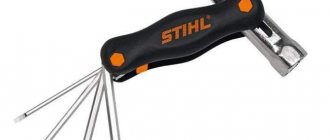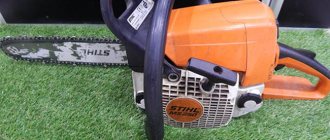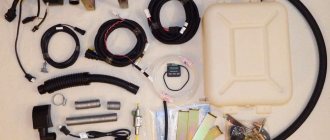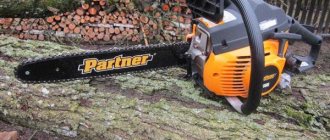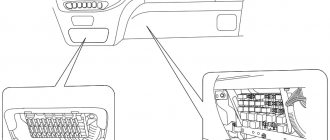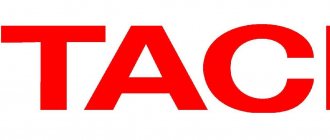Surely any summer resident or owner of a private home has at least once thought about buying a tool such as a gas trimmer (also called a gas trimmer). And this tool is really useful, because thanks to it you can very quickly put your plot of land in order. This equipment is purchased in order to mow the grass in your garden.
The structure of a lawn mower and common malfunctions
The easiest way is to have your lawn mower repaired by allocating a certain amount of money from the family budget; prompt and high-quality repairs with your own hands are no less simple and convenient if you want to understand the design of the lawn mower and fix all the problems.
Mass and piece production of trimmers is based on the use of generally accepted technology; a typical design diagram consists of certain elements and parts, it is important to know them when carrying out independent repair work:
- top part. The basis of the entire structure, where all the important elements are assembled, such as the starter, carburetor and lawnmower engine;
- middle part. A hollow rod, inside it there is a cable connecting the motor and the gearbox, which drives the cutting line. This part contains fastenings for distributing the weight of the entire structure and a belt for fixing the trimmer on the belt of the person using the trimmer for its intended purpose;
- Bottom part. It houses the gearbox and cutting elements, which are hidden under a practical cover that protects the user. The casing provides an increased level of safety, preventing large fractions of debris, stones and glass from entering a person while working with a lawn mower.
Knowing exactly the internal structure and operating principle of the trimmer, you can independently carry out repairs to the structure or replace individual components that have become unusable, using the repair instructions.
The most common and common unit breakdowns that can be self-corrected include the following problems:
- engine malfunction, due to which the lawn mower does not start and does not work;
- increased vibration of the mower bar, which complicates its intended use;
- increased overheating of the gearbox, its accelerated heating during operation;
- slow and weak functioning of the cutting line at insufficient speed;
- clogging of the starter grill, causing the engine to overheat and fail to operate;
- rapid and frequent carburetor clogging due to the use of low-quality fuel;
- clogging of the air filter due to failure to take care of the device.
All these problems can lead to the device losing its functionality; before ordering the necessary spare parts for the mowing machine, a visual inspection and diagnostics of the device should be carried out.
Individual spare parts and assemblies of the device require special attention; to check them, you do not have to contact a professional technician; a set of diagnostic measures will help you to identify the consequences of loss of performance with your own hands.
Technical features of trimmers
Popular among the people, lawn mowers and electric trimmers have significant differences not only in the engine part, but also in design, which means they are characterized by different malfunctions . However, breakdowns of elements common to all manual mowers, such as the cutting unit, often occur. In any case, in order to correctly diagnose and fix problems, you need to understand the design of both types of garden tools.
Petrol group of garden lawn mowers
All structural elements of lawn mowers are shown below in the drawing.
The engine of the type of garden tool under consideration can be single-cylinder 2-stroke or 4-stroke. In the first case, operation requires a fuel mixture consisting of gasoline (AI-92 only) and oil, and in the second, fuel and lubricating fluid are poured into different tanks. The power of the brush cutter ranges from 500 W to 3300 W. The weight of the devices is from 3 to 9 kg, but on average about 5 kg.
Electric group of garden lawn mowers
Electric trimmers are much simpler. They are lighter, but less powerful (550-1000 W). Their structural design is shown in the figure.
Such a garden tool can work for only 20 minutes; the motor needs the same amount of time to cool. The electric motor has an upper or lower location. In the latter case, the torque is transmitted directly to the gearbox (without a shaft). The weight of this trimmer is 1.4-2 kg.
Important! Another significant difference between an electric trimmer and a brush cutter is the inability to regulate the speed. In gas mowers, this occurs by changing the amount of fuel supplied (for this purpose, a gas handle is placed on the handle). The electric motor initially operates at maximum speed.
General structural elements
As can be seen from the figures, in addition to the drive, the remaining characteristics are common to all types of trimmers. Cutting tools can be: 1.2-4 mm fishing line or three- and four-blade knives capable of cutting branches at a rotation speed of 6000-11500 rpm, as well as metal discs. The rods are collapsible and solid, straight and curved, as well as telescopic. For ease of control of the trimmer, the handles have different configurations - in the form of the letters T, D and J. Control elements are located on them.
Trimmer Husqvarna 128R on Yandex Market
Trimmer Makita EBH341U on Yandex Market
Trimmer Huter GGT-2500S on Yandex Market
Determining the causes of the malfunction
If the trimmer engine does not start or stalls immediately after starting, if the gearbox overheats or during operation of the device, extraneous noise is heard and vibration is clearly felt, it is important to carry out a visual inspection and identify the non-working unit.
To optimize preparatory measures before repair, you should carry out simple diagnostics and check step by step:
- presence of fuel in the tank and lubricant in the main components;
- the serviceability of the spark plug and its performance;
- cleanliness of the brush cutter's fuel and air filters;
- clogging of the exhaust channel and breather of the device;
- quality of the fuels and lubricants used.
To determine the functional performance of the ignition of a lawn mower, you should determine whether the spark plug works by testing the appearance of a spark when it comes into contact with the body of the functional device.
The spark plug itself can be replaced with a new one by first drying the spark plug channel; if necessary, the old element is also dried, cleaned with special devices and returned to its place.
Rules for choosing a lubricant
Many companies that produce garden tools, such as Stihl and Husqvarna, produce their own lubricants for their products. In this case, it is recommended to use just such products - they best reduce equipment wear. If the original lubricant is not available for the trimmer, several factors should be taken into account when choosing a composition:
- quality of products of the brand that produces the lubricant;
- viscosity of the composition - this parameter is affected by the torque of the shaft;
- adhesion to the surface of the components of the assembly;
- consumption of lubricating coating - you need to take into account the air temperature, the type and volume of work performed.
Advice! If it is difficult to choose a lubricant, it is better to purchase a universal composition. It usually contains a number of additional components that protect the gearbox and extend its service life.
According to their consistency, lubricants can be liquid or semi-liquid, containing various additives and additives, as well as plastic and solid . The ductile ones are the most common, while the hard ones represent their original state. The most popular compositions are:
- graphite lubricants that reduce friction and improve gear movement;
- lithium compounds with high anti-corrosion properties and additives that reduce metal wear;
- universal substances containing mineral oils and additives that increase the performance properties of the gearbox.
The most common lubricants include: Litol-24, Champion EP-0, Azmol 158, as well as the production composition.
Carburetor repair
When inspecting the carburetor, you should pay attention to the possible leakage of the fuel used; to identify carburetor problems, the following measures must be taken:
- purging the fuel hose to eliminate possible clogging of the element;
- checking and replacing the gasket located between the engine and carburetor;
- determination of tightness and maintaining constant pressure in the unit.
If necessary, you can disassemble and thoroughly clean the unit yourself, using gasoline; cleaning the nozzle and channels is carried out using compressed air.
Electric trimmer Viking device. Viking trimmers: overview of popular models
Viking is a brand with a history that produces a wide range of garden tools. The first models were created in 1981, and today this brand has merged with the Stihl concern. Together they create the best technology.
Viking trimmers are high-quality tools that are designed for work in private areas and public utilities. They are characterized by high performance and sophisticated design.
Features of Viking brush cutters
- Equipped with powerful motors.
- Well-developed security system.
- Low noise level due to noise reduction technology.
- All spare parts are freely available.
Consider popular models from Viking.
Trimmer Viking TE 600
The Viking compact electric brush cutter is used in small summer cottages. It only works when connected to electricity, so you can use it to cut grass in the immediate vicinity of your home. The Viking model is suitable for decorating lawns, edging, working near foundations, under benches. A limiter is provided to adjust the cable length.
Specifications:
- motor performance is at 0.54 kW;
- covers up to 35 cm;
- weight – 4 kg.
The automatic shutdown system at high electrical loads makes working with the trimmer safer.
Trimmer Viking TE 1000
An electric brush cutter with increased power is designed for mowing grass over large areas. When using extension cords, the tool can be used on lawns and near yards. Can process up to 500 sq. m.
Main characteristics:
- performance is at the level of 1000 W;
- covers up to 35 cm;
- works with fishing line;
- weight – 5 kg.
The Viking trimmer produces virtually no vibrations and has a reduced noise level. There is a thermal protection system, thanks to which the model is not afraid of overheating.
Trimmer Viking TE 700
The powerful Viking brush cutter works on large areas and even processes land overgrown with large weeds. It copes with overgrown bushes and young trees. Withstands the heaviest loads.
Specifications:
- productivity is at the level of 0.54 kW;
- processing occurs at a width of 35 cm;
- cutting tool – double line;
- weight – 4 kg.
The Viking trimmer is equipped with a comfortable handle, which is covered with soft material and is height adjustable. There is a system for quickly replacing the rod and stabilizing the work during a sudden stop.
Breakdown of the starter and gearbox
The gearbox transmits torque from the motor shaft to the cutting tool; during operation, its gears must be absolutely clean and always lubricated with a special lubricant.
How to choose a piston compressorIn what cases is washing machine repair needed, what should everyone know?
Do-it-yourself wood splitter - drawings, diagrams, dimensions. 120 photos of homemade wood splitters
Carrying out a technical inspection on your own once a season will eliminate the need to repair the gearbox or replace it, with the purchase of an expensive new unit.
A starter is necessary to bring the trimmer into working condition; its diagnosis consists of checking the tension of the cord engaged with the teeth of the starter coil, which are often destroyed during a sudden start.
A non-working starter in a lawn mower cannot be repaired; it must be replaced with a working unit as part of a mandatory technical inspection or a set of repair measures.
The cutting elements require special attention and care; they must always be cleaned of dirt and mown grass after use. Regular inspection and thorough preparation of the device for operation will help you avoid expensive and time-consuming repairs, and always be confident in the functionality of the lawn mower.
Replacement process
Due to the different types of gears, shape and size of the seat, interchangeability of gearboxes is possible in rare cases. Therefore, when purchasing a new part, you should take into account the model of the old unit and the brand of the trimmer. In the event that you still need to use a non-original device, you must choose it taking into account the following nuances:
- rod diameter (usually 24.5 or 26 mm);
- seat shape and diameter (most often 8 mm);
- method of securing protection.
If the listed parameters are the same, the old gearbox can be replaced with a suitable non-original part. And to carry out the replacement, you need to remove the gearbox from the rod and disassemble it. To do this, you will need to loosen the tension bolts located under the structure and remove a pair of corkscrew rings using pliers, and then remove the bearings from the driven and drive shafts using a special puller. To reassemble the mechanism, you need to install the removed parts in reverse order.
First, you should disconnect the spool of fishing line from the gearbox. It screws onto the threaded part of the mechanism gear. It is tightened by hand, and subsequently clamped under the influence of the moment of inertia during operation of the scythe. This means that there is no need to use any tools to unscrew it.
Insert a flat-head screwdriver into the special technological hole and slowly turn the reel until its end fits into the recess of the slots.
With one hand, firmly hold the screwdriver in the selected position, and with the other, unscrew the part in the opposite direction of rotation. There are gearboxes that have a special through hole for disassembly; they are easier to change.
The gearbox is attached to the rod with two bolts. One fixes it in the center, and the second clamps it and does not allow movement during operation.
Loosen the clamp bolt two to three turns. Remove the lower gearbox; it will come off much easier if you constantly turn the body in different directions.
Using the same algorithm, insert the new one into place, aligning the holes in the body and the rod. Insert the appropriate bolt, then screw both hardware onto the gear housing until it stops.
Place the flange to drive the coil onto the shaft splines and tighten it. The flange not only rotates the cutting element, but also protects the gearbox from dirt.

